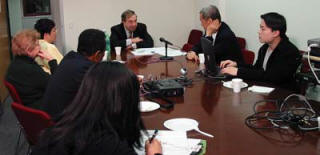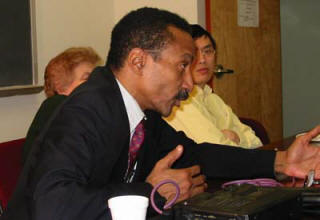
This presentation will compare the student academic achievements among the Italian and Asian communities. There has been a close bond in these communities not only demonstrated by the proximity of Little Italy and Chinatown, but as well as the evolving communities that were once Italian American strongholds (i.e. Ridgewood, Elmhurst, Flushing.) This symbiotic relationship is also evident in the educational achievements of the two communities such as high school dropout patterns, college career choices and management acceptance. This presentation will review educational achievement, occupational attainment, as well as demographic changes in the Italian and Asian community of New York City.
The number of Italians living in the United States is twice that of the Asian Pacific Islander population, according to the latest 2000 Census data. Based on figures from 1980 – 1990, one out of two, 21 & older has some college experience, with a 10% increase for Italians overall. Of those 21 & older, 18% of Asian Pacific Islanders has some high school experience under their belt, and one out of three Italians possessing at least a high school degree.

During the late 1970’s, one out of two did not complete high school. According to data collected by the Board of Education, in 1980, one out of five Italians did not complete high school, compared to one out of ten for Asian Pacific Islanders. At present, the number of high school completions by Asian American Pacific Islanders has steadily increased over the years.
Of those 25 and older, two out of three Asian Pacific Islanders possesses a college degree, compared to one out of two for Italians. It should also be noted that the number of Asian Pacific Islanders in this category possessing a college degree derive from a scholar pool from abroad. Of those 18 – 22 years of age, 9% of Asian Pacific Islanders, compared to 8½% of Italians, who are currently in the college market.

The Asian Pacific Islander population makes up 52.10% of total college undergraduates, while Italians make up 58.84%, showing a slight similarity of the two groups. 4.25% of Asian Pacific Islanders, compared to 7.30% of Italians, chose to attend a public college. 10.11% of Italians, compared to 4.14% of Asian Pacific Islanders, chose to attend a private college. One can see that there is a preference among Asian Pacific Islanders to attend public colleges, while Italians tend to take the private college route, with few going into Ivy League schools, compared to Asian Pacific Islanders (Private=3.76%, Ivy League=16.75%).
For those who choose to work in the higher education sector, 6.8% of Asian Pacific Islanders, compared to 4.8 % of Italians are professors. At the public college level, Asian Pacific Islanders make up 7.23% of faculty members, while Italians only constitute for 4.39%. Over the past 25 years, the number of fulltime faculty members between Asian Pacific Islanders and Italians has stayed relatively similar.

With the current data available, one can see that there is very little Asian Pacific Islander presence within the decision making field of the university system, with an overflowing number of them taking up only faculty positions.
Synopsis by Antony Wong

